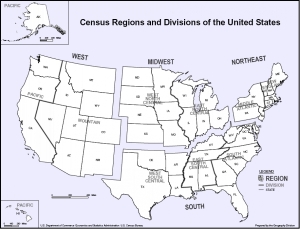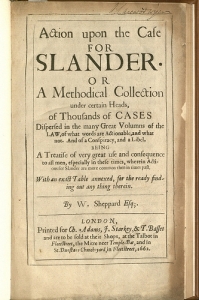By: Andrew R. Klein
I appreciate the opportunity to comment on the Wake Forest Law Review’s recent tort law symposium. The Law Review brought together an all-star cast of scholars who produced “must read” articles for those interested in the field.

Professor Bublick’s primary thesis is that failing to produce a separate project on intentional torts risks leaving the Restatement (Third)structurally inconsistent, as the current “umbrella” provision on liability for intentional physical harm does not appear to cover the broad range of trespassory torts[5] that encompasses harms beyond the physical.[6] Although I agree with many of Professor Bublick’s points, I am ultimately skeptical about whether a new project is truly necessary, or even in the ALI’s best interests. My primary concern is that excessive fragmentation of the Restatement of Torts—particularly in stable areas of the law—will make the Restatement more difficult to use and, perhaps, less relevant to the bench and bar. So, despite stylistic differences between the Restatement (Second) of Torts and the Restatement (Third) of Torts, as well as some theoretical tension, I believe that current sections on intentional torts from the Restatement (Second) can remain harmoniously in place alongside the Restatement (Third)’s provisions.
As a starting point, it is important to note that much of what Professor Bublick seeks already exists in the Restatement (Third) of Torts: Liability for Physical and Emotional Harm. The Restatement (Third) includes a definition of intent.[7] It includes a definition of physical harm.[8] It also includes a liability provision for intentional physical harm.[9] What it does not include, according to Professor Bublick, is “a new provision for exceptions to liability” that would parallel similar sections in the Restatement (Third) relating to negligence.[10] Nor does the Restatement (Third) include specific sections on trespassory torts that do not involve physical harm.[11] Thus, as Professor Bublick begins her discussion, she suggests that “[w]ith three of the four provisions already enshrined in the existing Restatement (Third), it might seem that a future project could simply add the final provision (for exceptions to liability), import Restatement (Second)’s provisions regarding trespassory torts, and be finished.”[12] To this, I respond, why not?
Professor Bublick answers that such an approach is “untenable.”[13] One of her main concerns is that the trespassory torts encompass a broader category of harm than would be covered by the Restatement (Third)’s umbrella provision.[14] She also argues that the Restatement (Second) fails to “extend liability to all conduct intended to cause physical harm that does so.”[15] I briefly address both of these objections below.
To support her latter point, Professor Bublick provides an example, envisioning a hypothetical lifeguard who chooses not to save a drowning neighbor who was having an affair with her husband.[16] She then asserts that “this omission [by the lifeguard], which produced harm . . . might not count as a battery, and yet . . . might satisfy the Restatement (Third)’s umbrella rule.”[17] Given the breadth of the umbrella provision, I suppose that is true. But I have a hard time believing that any court in the country would impose battery liability in such a situation given that Professor Bublick’s hypothetical lifeguard did not make contact with the victim. The best source for this conclusion is theRestatement (Second) of Torts itself, which defines battery as requiring a harmful or offensive contact.[18] Simply incorporating this definition into the Restatement (Third)would more than adequately limit the reach of the umbrella provision and cause no discernible damage to the Restatement (Third)’s structure or style.
I address Professor Bublick’s first point in a similar fashion. Professor Bublick is correct when she notes that the umbrella provision does not align perfectly with the range of interests that are protected by trespassory torts—for example, battery based on offensive contact, some instances of assault, false imprisonment, or even trespass to land actions where the defendant does not intend to cause damage to property.[19] Again, the breadth of the umbrella rule makes this true. But none of the areas identified by Professor Bublick represent doctrine that has dramatically changed since the publication date of the Restatement (Second). Therefore, simple incorporation of the definitions contained in existing sections would more than adequately address the problems that Professor Bublick describes. Ironically, the best source that supports this view comes from a work compiled and organized by Professor Bublick herself—the second edition of A Concise Restatement of Torts.[20] In the Concise Restatement of Torts, Professor Bublick organized key provisions from the Restatement (Second) and Restatement (Third) into a brief, coherent one-volume book that provides an excellent resource for students and practitioners alike. In the first two sections of the Concise Restatement, Professor Bublick weaved together sections from the Restatement (Second) and Restatement (Third) in a way that clearly explicated the elements of and defenses to traditional intentional torts, including trespassory torts that do not require physical harm.[21] The fact that Professor Bublick introduced this book with the umbrella provision of the Restatement (Third) does nothing—at least in my view—to deter from the coherence of her work.[22]
In questioning Professor Bublick’s call for a stand-alone Restatement (Third) project on intentional torts, I do not challenge her suggestion that the style and structure of the newer projects are not a perfect fit with the Restatement (Second). I also acknowledge that Professor Bublick and others who are deeply involved in ongoing Restatement projects have expressed concern about creating what they describe as a “Restatement-light.”[23] In addition, there is little doubt that ALI leaders will need to continue to pay attention to coordination and consistency in the Restatement of Torts, not only in initiating new projects, but also in maintaining existing projects. Of course, complications are multiplied every time a new piece to the puzzle is created. So in an area like intentional torts that has largely remained stable and consistent, I question whether it makes sense to start anew. The potential gains seem minimal at best. At the same time, there is at least some risk that a new project will create additional complications, making the Restatement as a whole more difficult to use for those who rely on its clarity for guidance. Certainly, the ALI has no shortage of suggestions regarding how to revise the Restatement of Torts, from clarifying which parts of the Restatement (Second) remain effective,[24] to determining the scope of strict-liability doctrines,[25] to addressing the role of foreseeability in proximate cause.[26] With the intentional torts, however, I would counsel to leave well enough alone.
[1]. Ellen M. Bublick, A Restatement (Third) of Torts: Liability for Intentional Harm to Persons—Thoughts, 44 Wake Forest L. Rev. 1335 (2009). [2]. Id. at 1336. [3]. See id. at 1336–46. [4]. See id. at 1346–53. [5]. Restatement (Third) of Torts: Liab. for Physical & Emotional Harm § 5 (2010) (“An actor who intentionally causes physical harm is subject to liability for that harm.”). Comment a to this Section describes it as an “umbrella rule,” and states that the “Restatement Second, Torts, remains largely authoritative in explaining the details of the specific torts encompassed by this Section . . . until the Third Restatement addresses the specific intentional torts.” Id. cmt. a. [6]. Bublick, supra note 1, at 1342–43. Other leaders in the ALI have agreed. See, e.g., Ellen Pryor, Restatement (Third) of Torts: Coordination and Continuation, 44 Wake Forest L. Rev. 1383, 1385 (2009) (noting the ALI working group’s rejection of a “Restatement-light” approach due to an “overall disconnect between the style and particularized approach of the Restatement (Second) and the Restatement (Third), as well as the inability to alter the deeper architecture of Division One (‘Intentional Harms to Persons, Land, and Chattels’) of the Restatement (Second) in the ways that might be necessary to fit with future restated topics.”); see also id. at 1392 (discussing the possibility of a new project on intentional torts). [7]. Restatement (Third) of Torts: Liab. for Physical & Emotional Harm § 1 (2010). [8]. Id. § 4. [9]. Id. § 5. [10]. Bublick, supra note 1, at 1342. [11]. Id. [12]. Id. [13]. Id. [14]. Id. at 1343. [15]. Id. at 1344. [16]. Id. [17]. Id. [18]. Restatement (Second) of Torts §§ 13, 18 (1965). [19]. Bublick, supra note 1, at 1344. [20]. Am. Law Inst., A Concise Restatement of Torts (Ellen Bublick ed., 2d ed. 2010). [21]. See id. at 2–52. [22]. It is worth noting that the late Professor Gary Schwartz did not believe the Restatement (Third) of Torts should devote significant attention to intentional torts when he wrote the original prospectus for a “basic principles” of torts project in 1995. Gary T. Schwartz, Prospectus for Restatement (Third): Basic Principles: Report to the American Law Institute 6 (1995). (Professor Schwartz was the first reporter for what later became known as the Restatement (Third) of Torts: Liability for Physical and Emotional Harm.) In his prospectus, Professor Schwartz wrote that “a ‘basic tort principles’ restatement should not devote much attention to the entire range of intentional torts, currently dealt with mainly in Volume I of the Second Restatement.” Id. Professor Schwartz noted a lack of significant appellate litigation in the intentional torts area subsequent to the promulgation of the Restatement (Second) of Torts, and stated that it would suffice for the new project to limit its focus in the area to ensuring a clear definition of intent. Id. at 7–8. [23]. See e.g., Pryor, supra note 6, at 1385 (discussing a “Restatement-light approach” to updating some topics in tort law by applying a less exhaustive review of areas of tort law that have remained stable). [24]. See id. at 1390. [25]. See Kenneth W. Simmons, Restatement (Third) of Torts and Traditional Strict Liability: Robust Rationales, Slender Doctrines, 44 Wake Forest L. Rev. 1355, 1356 (2009). [26]. See David G. Owen, Figuring Foreseeability, 44 Wake Forest L. Rev. 1277, 1293–95 (2009).




